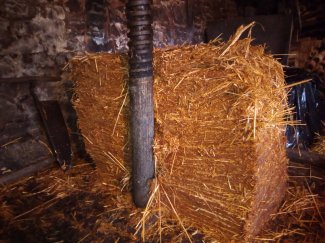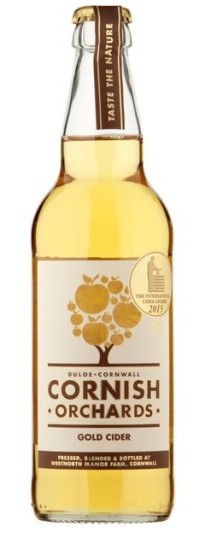Time to get something off my chest…
The real aim behind my blogging and tweeting is to promote cider and get more people to discover what a fantastic drink it is. This can sometimes be a bit of a challenge. Many people I know and meet were traumatised in their teens by a two-litre bottle of something horrible, or only know of (and dislike) the common place draught ciders. Couple this with the many different flavours being added to cider these days and its easy to get confused.
At the other end of the spectrum, you have those who demand cider to be 100% pure juice and have little time for anything (and sometimes anyone) else and who often use a tone which I find detrimental to the good cause. With this blog, I shall try to explain the difference between ciders and give my opinion on what really matters.

Traditional straw pressing in Devon.
So, what is ‘Real cider’. Well, there is no universally agreed definition, but in a nutshell, it is cider made from fermenting fresh pressed apple juice with little if anything else added or taken away. In contrast, the government states that cider can be made from as little as 35% apple juice, which is often from concentrate, hence the need for the distinction. To make great tasting real cider is a true craft and duly deserves its credit. It’s what the connoisseur or indeed the purist desires, and the most exquisite ciders I have tasted fall into this category. But it is also home to the worst cider that I have ever tried….
Outside of the full juice bracket, cider makers tend to use additional techniques and

An example of a more authentic, great tasting cider.
processes to make a more commercially successful drink, but the fundamentals often remain the same. Fresh pressed juice, long fermentation and maturation, then blended to make a satisfying, session able drink that’s more appealing to the average consumer. The use of fresh juice makes these ciders really stand out in flavour from their more industrial counterparts. Such brands are more likely to use apple juice concentrate, flavouring and sweeteners to make a cheaper and more easily replicated cider. It is easy to poke fun at these huge makers, I’ve been guilty on many occasions. But at the end of the day, cider makers, pubs and retailers are not charities, they are businesses. Making cider this way employs hundreds of people, supports local agriculture, and has helped artisan cider makers start up and flourish through this time of growth.
For me, flavour is king. If it doesn’t taste great, I don’t care for its story, its purity, or its heritage. It must be a delight to the senses and help to show that cider has moved on from its rat in the vat image of yesteryear. I must be clear though, poorly made real ciders like these are now rare and there certainly are some commercial cider makers who aren’t doing good things.
The problem I find with the real cider community sometimes is that ciders which do not prescribe to their arbitrary definition are often tarred with the same brush. Many ciders of more authentic make up and flavour are shunned as inferior, even if they taste great. To me this is daft. In my experience, passing a glass of truly real cider to a friend has not been the most successful tactic in converting them to its charms. It tends to be a culture shock. It can be too dry, too complicated and generally unexpected. Whilst rarely rejected, they also don’t tend to be in a rush to buy a pint. I have found more success in letting them try a more authentic commercial cider, one made from fresh apple juice and that is delicious but not too challenging.
I don’t want to sound too negative, I just want to encourage more open-mindedness. I genuinely think there’s huge potential for ciders in this middle ground to entice new drinkers. It can banish those teenage demons and change the minds of those who think they don’t like cider, when really, they don’t like one brand. Ultimately that’s what anyone like me wants, to encourage drinking great cider, from whatever county or country. The greater the demand for cider, the more cider makers, and better quality we get. I just think it’s wrong to tell people what they should drink, much better to ease them in the right direction and find out for themselves. This is essentially how I came to being a cider enthusiast.
I will do a follow up to this blog featuring ciders available in supermarkets which I recommend to those looking to give cider another go and for those looking for something different from their usual draught tipple.
Cheers!
Looking forward to your cider recommendations!
LikeLiked by 1 person